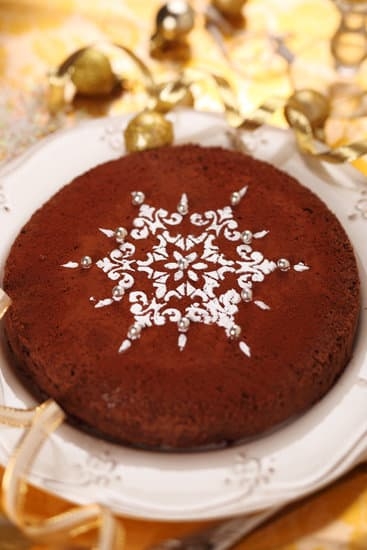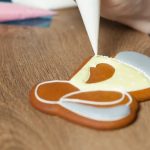What is sugar paste for cake decorating? Sugar paste, also known as fondant, is a versatile and popular medium used in the art of cake decoration. This pliable and edible substance can be molded into various shapes, designs, and textures to add a touch of elegance and creativity to cakes.
Sugar paste has a rich history in the world of baking and confectionery. Over the years, it has evolved from a simple icing to a sophisticated tool for creating intricate cake designs. Understanding the origins and development of sugar paste can provide insight into its significance in modern cake decorating practices.
In this article, we will delve into the fundamentals of sugar paste for cake decorating, exploring its history, common ingredients, techniques, essential tools, tips and tricks for using it effectively, common mistakes to avoid, as well as inspiring designs and ideas for incorporating sugar paste into your cake decorations. Let’s uncover the magic behind this beloved medium in the world of baking.
History of Sugar Paste
Sugar paste, also known as fondant, has a rich history in the world of cake decorating. Its origins can be traced back to ancient Egypt and medieval Europe, where it was primarily used to create intricate designs on pastries and desserts for special occasions. Over the centuries, sugar paste has evolved from a simple decorative element to a versatile medium that allows for endless creativity in cake decoration.
Early Beginnings and Traditional Use
In ancient Egypt, sugar paste was used to adorn sweet treats during religious ceremonies and feasts. These early versions were made with honey, fruits, and nuts, creating a pliable mixture that could be molded into various shapes and designs. As the art of sugar crafting spread throughout Europe in the medieval period, sugar paste became a staple in royal kitchens for creating ornate decorations for extravagant banquets and celebrations.
Modern Innovation and Adoption
The modern version of sugar paste that we use today is made with a combination of sugar, water, and gelatin or gum arabic. This innovation has made it easier to work with and provided cake decorators with a smooth canvas to unleash their creativity. With the rise of baking shows and social media influencers showcasing elaborate fondant creations, sugar paste has become a popular choice for both amateur bakers and professional cake artists alike.
Ingredients
Types of Sugar
One of the key ingredients in sugar paste for cake decorating is, of course, sugar. There are different types of sugar that can be used, such as confectioners’ sugar (also known as icing sugar or powdered sugar) and granulated sugar. Confectioners’ sugar is commonly used because it dissolves easily, resulting in a smoother paste that is easier to work with. Granulated sugar can also be used but may require more mixing to achieve the desired consistency.
Water or Liquid
Another essential ingredient in making sugar paste is water or some form of liquid. The liquid helps bind the ingredients together and create a pliable dough-like consistency. Some recipes call for water, while others use alternatives like lemon juice or glycerin to add flavor and improve elasticity.
Gum Tragacanth or Tylose Powder
To give the sugar paste strength and flexibility, gum tragacanth or tylose powder is often added. These substances act as stabilizers and help the paste hold its shape when molded into intricate designs. Gum tragacanth is a natural gum obtained from the Astragalus gummifer plant, while tylose powder is a synthetic alternative that produces similar results. Both are commonly used in cake decorating to ensure the durability of the finished decorations.
Techniques
When it comes to cake decorating, mastering the techniques for working with sugar paste is essential. Sugar paste, also known as fondant, is a versatile medium that can be shaped and molded to create intricate designs on cakes. Whether you are a beginner or an experienced baker, learning different techniques for working with sugar paste can elevate your cake decorating skills to the next level.
Here are some key techniques for working with sugar paste:
- Rolling: One of the fundamental techniques in using sugar paste is rolling it out to achieve the desired thickness. A smooth and even surface is crucial for covering cakes or creating decorations.
- Embossing: Using embossing tools or molds can add texture and detail to your sugar paste decorations. From floral patterns to geometric designs, embossing can make your cakes stand out.
- Modeling: Sculpting shapes and figures from sugar paste requires careful hands and attention to detail. Whether you are creating flowers, animals, or objects, practicing modeling techniques can enhance the visual appeal of your cakes.
Experimenting with these techniques and combining them creatively can result in stunning cake decorations that will impress your friends, family, or clients. With practice and patience, you can master the art of working with sugar paste and take your cake decorating skills to new heights.
Tools
When it comes to working with sugar paste for cake decorating, having the right tools can make a world of difference in achieving professional-looking results. From shaping intricate details to smoothing out surfaces, these essential tools are a must-have for any cake decorator looking to work with sugar paste.
Here are some of the key tools needed for shaping and molding sugar paste:
- Rolling Pin: A rolling pin is essential for rolling out sugar paste to the desired thickness before applying it to the cake. Look for a non-stick rolling pin to prevent the sugar paste from sticking.
- Cutters: Various shaped cutters are used to create different designs and shapes with sugar paste. From basic circles and stars to intricate flowers and leaves, cutters are versatile tools that can add dimension to your cake decorations.
- Embossers: Embossers are used to create patterns or textures on the surface of the sugar paste. They come in a variety of designs, allowing decorators to add unique details to their creations.
Using these tools effectively can help you achieve clean lines, precise shapes, and stunning decorations when working with sugar paste. Experimenting with different tools and techniques can also help you develop your own unique style as a cake decorator using what is sugar paste for cake decorating.
Tips and Tricks
When it comes to using sugar paste for cake decorating, there are a few key tips and tricks that can make your creations truly stand out. One of the most important things to remember is to knead the sugar paste thoroughly before using it. This helps make the paste more pliable and easier to work with, allowing you to create smooth and even surfaces on your cakes.
Another pro tip for working with sugar paste is to use cornstarch or powdered sugar to prevent sticking. Dusting your work surface, rolling pin, and hands with either of these substances can help prevent the sugar paste from clinging and tearing as you shape it. Additionally, make sure to roll out the sugar paste evenly to achieve a consistent thickness throughout, which is crucial for creating professional-looking decorations.
One of the challenges that many beginners face when working with sugar paste is air bubbles forming underneath the surface. To avoid this issue, try using a smoothing tool or paddle to gently press out any trapped air while you are shaping the paste. By taking your time and paying attention to detail, you can ensure a flawless finish on your cake decorations every time.
| Pro Tip | Description |
|---|---|
| Knead Thoroughly | Ensure that the sugar paste is well-kneaded for better pliability. |
| Prevent Sticking | Use cornstarch or powdered sugar to prevent the sugar paste from sticking. |
| Avoid Air Bubbles | Use a smoothing tool or paddle to eliminate air bubbles for a smooth finish. |
Common Mistakes
When it comes to working with sugar paste for cake decorating, there are several common mistakes that beginners and even experienced bakers may encounter. One of the most prevalent errors is not kneading the sugar paste enough before use. Properly kneading the sugar paste helps to make it more pliable and easier to work with.
If the paste is not kneaded adequately, it can result in cracking or tearing when rolled out or shaped. To avoid this issue, be sure to spend enough time kneading the sugar paste until it becomes smooth and elastic.
Another common mistake when working with sugar paste is adding too much color at once. Whether using gel colors, liquid colors, or dusts, it’s important to add color gradually and mix well before adding more. Adding too much color can lead to an overly sticky or soft paste that is difficult to work with. It’s best to start with a small amount of color and adjust as needed to achieve the desired shade.
Additionally, rushing the drying process is another mistake to avoid when working with sugar paste for cake decorating. Drying time may vary depending on the thickness of the paste and humidity levels in your environment. It’s essential to allow enough time for your decorations or figurines to dry completely before handling them.
Rushing this process can result in misshapen or cracked decorations. Patience is key when working with sugar paste, so be sure to plan ahead and give yourself enough time for proper drying.
| Common Mistake | How to Avoid |
|---|---|
| Not kneading enough | Properly knead until smooth and elastic |
| Adding too much color | Add color gradually and mix well before adding more |
| Rushing the drying process | Allow enough time for decorations to dry completely |
Designs and Ideas
When it comes to cake decorating, sugar paste is a versatile and popular choice among bakers and decorators. This pliable icing, also known as fondant, allows for endless creative possibilities in designing and decorating cakes. From simple shapes to intricate details, sugar paste can be molded, shaped, and colored to bring any cake design to life.
One of the most popular ways to use sugar paste in cake decoration is creating 3D decorations. Whether it’s sculpting flowers, figurines, or even animals, sugar paste provides the flexibility and stability needed to create stunning and realistic designs. With the right tools and techniques, decorators can craft intricate details that truly elevate the overall look of a cake.
In addition to 3D decorations, sugar paste can also be used for covering cakes completely, giving them a smooth and professional finish. By rolling out a thin layer of sugar paste and carefully draping it over the cake, decorators can achieve a seamless look that is perfect for special occasions like weddings or birthdays. The ability to color sugar paste opens up endless possibilities for creating custom designs that will impress any client or party guest.
Conclusion
In conclusion, sugar paste is an essential and versatile tool in the world of cake decorating. It has evolved over time, from its humble beginnings to becoming a staple in creating visually stunning and intricate designs on cakes. The ingredients used in making sugar paste are simple yet effective, allowing for endless possibilities in shaping and molding the paste into various shapes and figures.
When it comes to techniques for working with sugar paste, there are numerous approaches that can be employed to achieve different effects. Whether it’s rolling out the paste to cover a cake smoothly or using molds to create intricate decorations, the key is to practice and experiment with different methods to find what works best for each unique design.
Additionally, having the right tools at your disposal is crucial for success when working with sugar paste – from rolling pins to shaping tools, having a well-equipped toolbox can make all the difference in achieving professional-looking results.
Overall, understanding how to effectively use sugar paste in cake decorating can open up a world of possibilities for creating stunning and personalized cakes. By avoiding common mistakes, utilizing pro tips, and drawing inspiration from various designs and ideas, decorators can take their creations to the next level.
So next time you ask yourself “what is sugar paste for cake decorating,” remember that it’s not just an ingredient – it’s an art form that allows for creativity and innovation in the world of baking.
Frequently Asked Questions
What Is the Difference Between Fondant and Sugar Paste?
Fondant and sugar paste are similar in that they are both used to decorate cakes, but there are some key differences between the two. Fondant tends to have a smoother texture and is often rolled out thinly to cover cakes.
On the other hand, sugar paste is typically softer, more pliable, and is often used for creating intricate decorations like flowers or figures on cakes.
What Is Sugar Paste Made From?
Sugar paste, also known as gum paste or modeling paste, is made from a mixture of powdered sugar, water, gelatin, and sometimes glucose or corn syrup. This mixture creates a pliable dough-like consistency that can be molded and shaped into various decorations for cakes and pastries.
What Is the Sugar Paste Used to Decorate Cakes?
Sugar paste is commonly used to create elaborate decorations on cakes such as flowers, leaves, figurines, bows, and other intricate details. It is favored by cake decorators for its versatility and ability to hold its shape once dried. Sugar paste can be colored with food coloring to achieve different shades or painted with edible paints for added detail on cakes.

Welcome to our cake decorating blog! My name is Destiny Flores, and I am the proud owner of a cake decorating business named Cake Karma. Our mission is to provide delicious, beautiful cakes for all occasions. We specialize in creating custom cakes that are tailored specifically to each customer’s individual needs and tastes.





